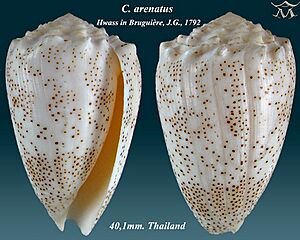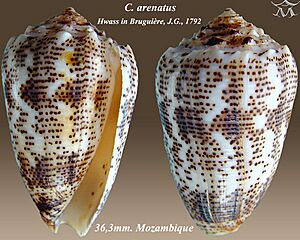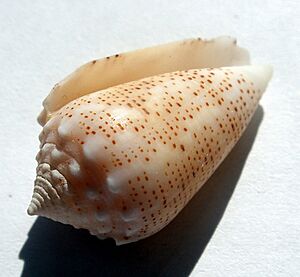Conus arenatus facts for kids
Quick facts for kids Conus arenatus |
|
|---|---|
 |
|
| Apertural and abapertural views of shell of Conus arenatus Hwass in Bruguière, J.G., 1792 | |
 |
|
| Conservation status | |
| Scientific classification | |
| Synonyms | |
|
Conus arenatus, common name the sand-dusted cone, is a species of sea snail, a marine gastropod mollusk in the family Conidae, the cone snails and their allies.
These snails are predatory and venomous. They are capable of "stinging" humans, therefore live ones should be handled carefully or not at all.
Description
The size of the shell varies between 25 mm and 90 mm. The shell is stoutly turbinated, coronated on the spire. The color of the shell is white, sprinkled in a waved longitudinal manner with very small, close brown dots, sometimes forming indistinct bands. The aperture has usually a light flesh-color.
Distribution
This marine species is occurs in the Red Sea and in the Indo-Pacific; and off Australia (Northern Territory, Queensland, Western Australia). The species now also occurs in the Mediterranean off Israel, having invaded as a Lessepsian migrant through the Suez Canal.



